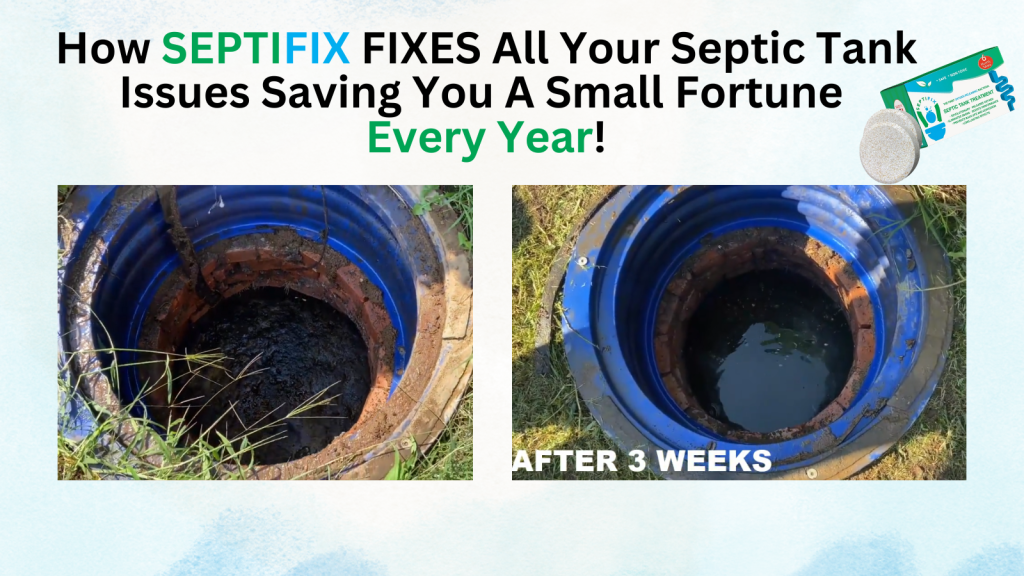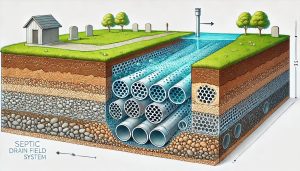Greywater recycling and septic systems are gaining attention as eco-conscious homeowners and rural residents look for sustainable ways to manage household wastewater. By reusing lightly used water and reducing the load on septic systems, this combination supports water conservation, system longevity, and environmental health. Whether you live in a suburban home or a country cabin, understanding how these systems work together can save money, protect groundwater, and support eco-friendly living.
Table of Contents
- What Is Greywater?
- How Greywater Recycling Works
- Overview of Septic Systems
- How Greywater Recycling Benefits Septic Systems
- Key Considerations Before Implementing Greywater Recycling
- Real-World Applications and Success Stories
- Contact Info and Resources
- Conclusion
- Septic Permit Links by State
What Is Greywater?
Greywater is wastewater generated from non-toilet household activities such as showering, laundry, and handwashing. It excludes water from toilets, which is classified as blackwater due to its higher pathogen load.
Common Sources of Greywater:
- Bathroom sinks
- Showers and tubs
- Washing machines
This water is typically less contaminated and can be reused for irrigation, toilet flushing, or even landscape features—if properly treated.
How Greywater Recycling Works
Greywater systems collect and filter water from approved sources before redistributing it. There are simple manual bucket methods and complex automated systems. Key components include:
- Collection piping (separate from blackwater lines)
- Filtration (sand filters, mesh screens, or biofilters)
- Holding tanks for temporary storage
- Distribution systems like drip irrigation or toilet supply
Proper design and routine maintenance are crucial to avoid clogs, odors, or contamination.
Overview of Septic Systems
A septic system is an underground wastewater treatment structure commonly used in areas without centralized sewer systems. It typically includes:
- A septic tank to separate solids and liquids
- A drainfield or leach field for soil-based treatment
- Baffles and filters to manage flow and reduce solids entering the field
On-site sewage systems, private wastewater systems, and onsite treatment units are regional synonyms often used interchangeably.
How Greywater Recycling Benefits Septic Systems
Incorporating greywater recycling reduces the volume of water entering your septic system. This has several important advantages:
Reduced Hydraulic Load
Diverting greywater means less water flows into the tank and drainfield, extending the system’s life and reducing the risk of overload.
Improved Drainfield Health
Excess water can lead to soil saturation, which impairs treatment. By decreasing flow, greywater reuse helps maintain healthy soil permeability.
Lower Pumping Frequency
With less incoming water, the septic tank fills more slowly. This can lead to fewer pump-outs and lower maintenance costs over time.
Key Considerations Before Implementing Greywater Recycling
While appealing, greywater systems must be installed carefully and comply with local regulations.
Legal and Regulatory Guidelines
Check your state or county codes—some regions require permits or prohibit greywater use altogether. For example, California allows greywater systems with specific restrictions, while Massachusetts requires engineered plans.
Safety and Health
- Avoid storing greywater for more than 24 hours to prevent microbial growth
- Never reuse water from kitchen sinks or dishwashers (too high in grease and food particles)
- Label greywater pipes clearly to prevent cross-connections
Compatibility With Septic Layout
Older septic systems may lack the plumbing separation required to divert greywater. Retrofitting may involve significant labor or cost.
Real-World Applications and Success Stories
Many off-grid homes and eco-conscious developments use greywater recycling alongside septic systems. For instance:
- A family in rural Oregon uses a simple diverter valve system to send shower water directly to a garden bed, reducing septic load by 40%.
- In Arizona, a housing co-op uses filtered laundry greywater to flush toilets and irrigate landscaping, conserving over 10,000 gallons annually.
These examples show that with thoughtful planning, integrating greywater and septic can be both practical and cost-effective.
Contact Info and Resources
For guidance on system design and local codes, consult:
- EPA’s SepticSmart Program
- Greywater Action for DIY and system planning
- Your county health department or local septic installer
- NSF International for certified water treatment products
Need help with installation? Contact a licensed septic contractor to discuss whether your system is compatible with greywater recycling.
Conclusion
Greywater recycling and septic systems can work hand in hand to conserve water, reduce system strain, and promote sustainable living—especially in rural or off-grid homes. With proper planning, adherence to regulations, and routine maintenance, this pairing offers both environmental and economic benefits.
Ready to explore greywater recycling for your property? Start by consulting a local septic professional to determine the best path forward.









